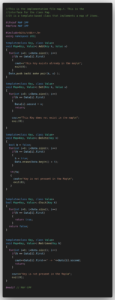Vue.js is a popular JavaScript framework for building user interfaces. It uses a component-based architecture, where each component is a reusable piece of code that can be combined with other components to create complex applications.
When creating a Vue component, you must define a template that specifies the HTML structure of the component. The template can contain multiple elements, but the root element must be exactly one element. This is because Vue only allows one root node in a component template.
Why Vue Requires Exactly One Root Element
There are several reasons why Vue requires exactly one root element in a component template:
- Simplicity: Restricting the template to a single root element simplifies the Vue compiler and makes it easier to reason about the structure of a component.
- Performance: Having multiple root elements can negatively impact performance, as Vue must create a new virtual DOM node for each root element.
- Consistency: Enforcing a single root element ensures consistency across components, making it easier to maintain and develop applications.
- Error Handling: If a template contains multiple root elements, Vue will throw an error during compilation, making it easy to identify and fix any issues.
How to Ensure a Single Root Element
To ensure that your Vue component templates have exactly one root element, follow these guidelines:
- Always wrap the content of your template within a single root element, such as a div or a span.
- If your template contains multiple elements at the same level, consider grouping them into a logical container element.
- If you need to use multiple root elements for a specific purpose, consider creating separate child components for each root element.
- Use Vue’s fragment syntax (v-for=”item in items” key=”item.id”) to create multiple elements without creating multiple root elements.
- If you encounter the error “vue the template root requires exactly one element,” check your template for any unintended multiple root elements and refactor accordingly.
Conclusion
Enforcing a single root element in Vue component templates is a fundamental design principle that contributes to the framework’s simplicity, performance, and consistency. By following the guidelines outlined above, you can ensure that your Vue components are well-structured, easy to maintain, and performant.
Remember to always check for the presence of exactly one root element in your templates, and if you encounter the error “vue the template root requires exactly one element,” promptly address the issue to maintain the integrity of your application.

